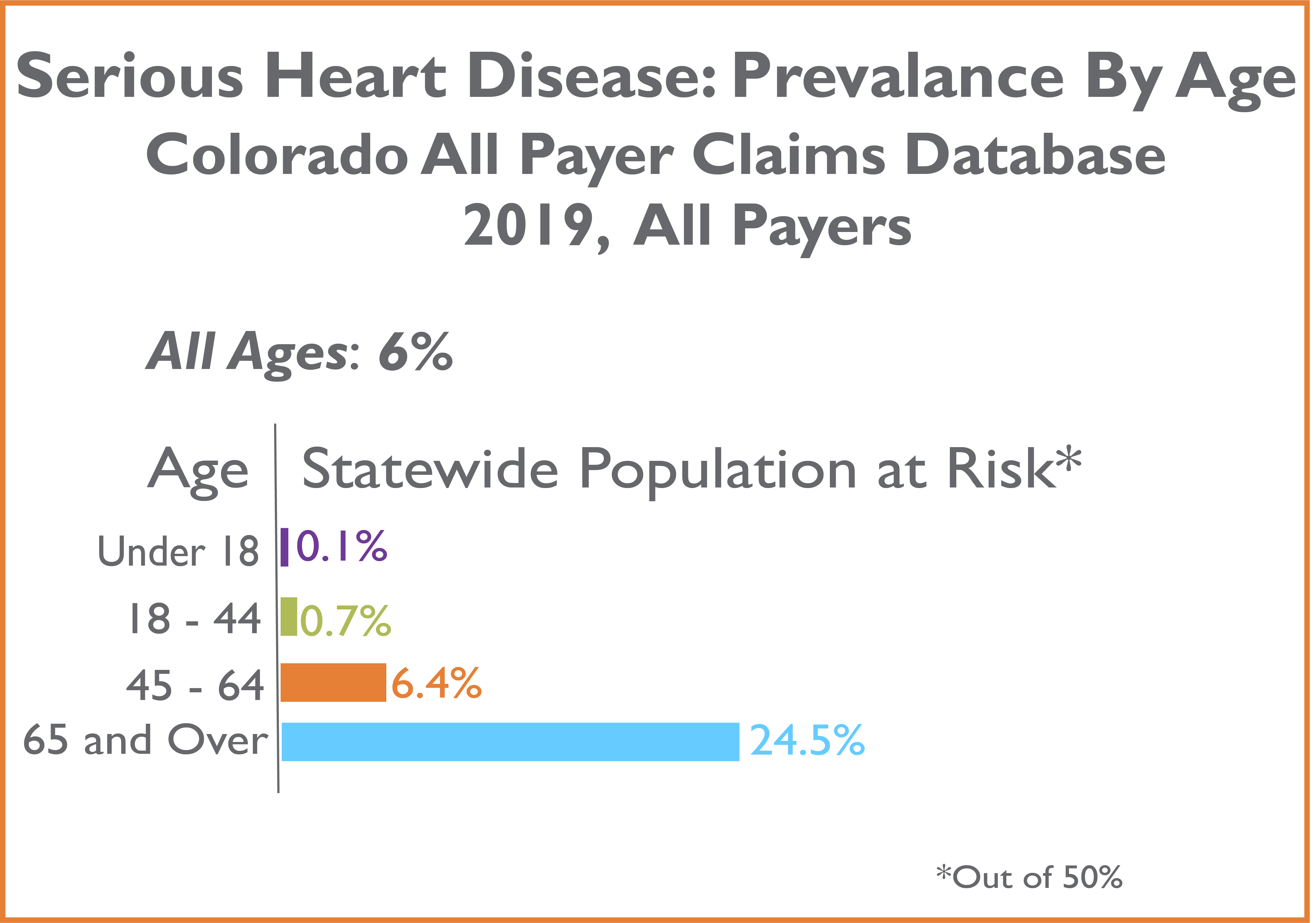Heart Disease Varies Among Coloradans, Across the State and by Health Insurance Coverage
In recognition of Heart Disease Awareness Month in February, we examined data from the Colorado All Payer Claims Database (CO APCD) to identify how heart disease varies across the state. According to the Centers for Disease Control and Prevention (CDC), heart disease is the leading cause of death in the United States, and people living with heart disease face higher risk of serious illness as a result of COVID-19.
Shortly after the onset of COVID-19, CIVHC produced a report identifying populations at risk of serious illness to help the state and communities assess counties where people who contract COVID-19 may need expanded access to resources and care. In addition to those with serious heart disease, the report included risk factors by age and other chronic illnesses such as lung disease and liver disease, those living in a nursing home, tobacco users, and people who are immunocompromised.
Among the insured population in Colorado, 6% are diagnosed with a serious heart condition. The demographic breakdown of people with heart disease shows that it is more prevalent among men (7%) than women (5%), slightly more prevalent in urban (6%) than rural (5%) counties, and is significantly more prominent among Coloradans ages 65 and over (25%).

Looking deeper into the age groups by insurance coverage type reveals more variation among Coloradans diagnosed with serious heart conditions. In the age group of 45-64, which accounts for 6% of the total population affected by serious heart conditions, significantly more people have Medicaid as opposed to commercial insurance coverage.
Among this age group, 5% of individuals diagnosed with a serious heart condition have commercial coverage while 10% have Medicaid. Among ages 65 and over, 14% have commercial coverage and 19% have Medicaid. The highest percentages of those diagnosed with heart conditions among the 65+ age group are, as expected, those enrolled in Medicare FFS and Medicare Advantage.

For the 45-64 age group in particular, differences between Medicaid and commercially covered individuals could be due to a number of factors, including racial health inequities, and other social disparities including poverty and lack of access to resources important to maintaining heart health.
The CDC recommends a number of lifestyle behavioral factors that help prevent heart disease, including healthy eating, maintaining a healthy weight, working out regularly, and avoiding smoking. It is likely a number of those enrolled in Medicaid face a variety of factors that make these health behaviors more difficult to attain like lack of access to affordable, healthy food options.
As we highlighted in last month’s data dive on cervical cancer prevention in Colorado, for people in rural areas, health care services tend to be less accessible due to facility and provider workforce shortages and it may not be feasible for people to travel to urban areas outside of a major health event.
While CDC maps of heart disease-related death rates and hospitalizations across the country show Colorado as above average in positive health indicators, there are still clear disparities that exist among certain populations in our state that makes them much more vulnerable to COVID-19 and other serious illnesses.
To see data around other populations at risk for serious illness from COVID-19, view CIVHC’s full report and download the underlying data.
